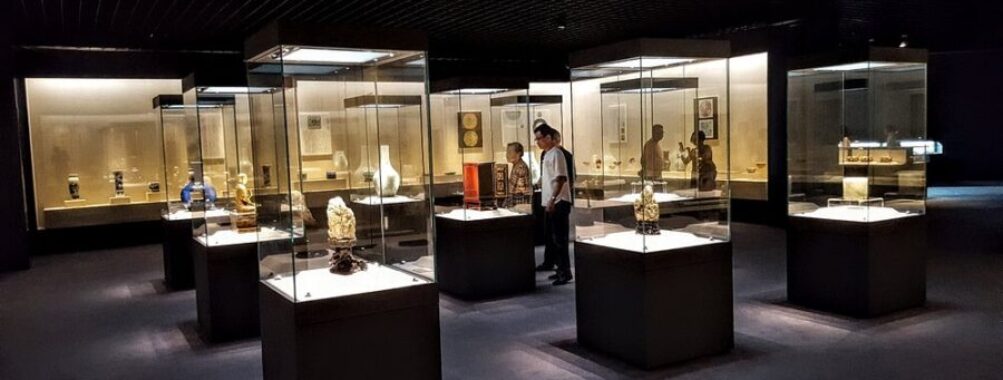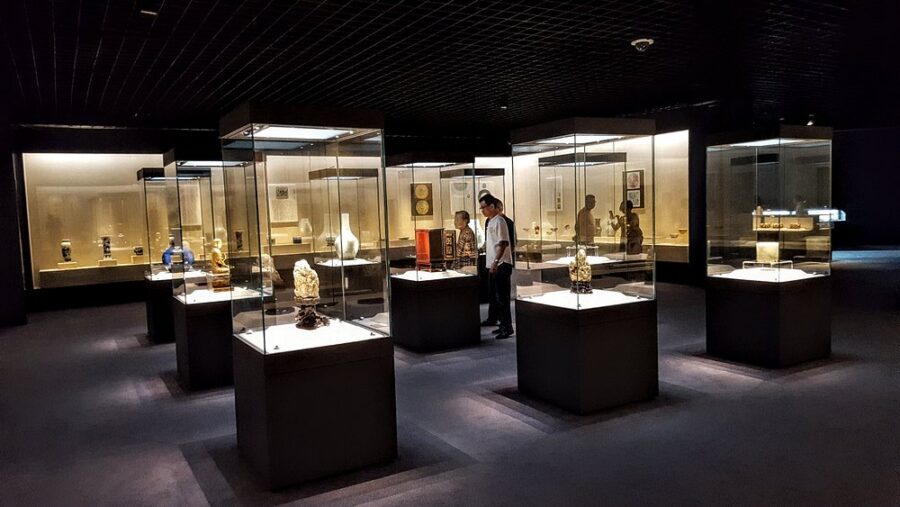
Shantou Museum
Table of Contents
History and Significance

So, you’re thinking about exploring the Shantou Museum in Ganzhou, and I’m here to take you on a little journey through what makes this place much more than just a building stuffed with artifacts. The museum, established way back in 1960, stands as a proud custodian of Shantou’s rich history, culture, and the indomitable spirit of the Chaoshan people, who have shaped not just this region but far-flung corners of the world through their migrations. Shantou itself, a coastal city with a fascinating blend of Chinese and Western influences due to its history as a treaty port in the 19th century, is teeming with stories of trade, resilience, and cultural fusion. The museum encapsulates this vibrant legacy and serves as an educational hub where you can witness the evolution of the city from the Neolithic ages through the Ming and Qing dynasties to modern times.
What’s striking about the Shantou Museum is not just its large collection—over 13,000 relics including ceramics, bronzes, jade carvings, exquisite calligraphy, and paintings—but how it provides an extensive window into the local Chaoshan identity. It’s the main institution responsible for collecting, preserving, researching, and promoting these cultural treasures, and also acts as a patriotic education and youth service base. Walking through, you get a visceral feel for the historical struggles, artistic achievements, and everyday life that shaped Shantou’s unique place on China’s cultural map.
Main Attractions and Activities
When you step inside, you’re greeted by the museum’s four floors of galleries thoughtfully organized to take you on a chronological and thematic stroll through time. On the ground floor, the vibrant modern paintings by renowned Shantou artists immediately draw you in — a reminder that this is not just about the past but an ongoing cultural conversation. You’ll also find fascinating exhibitions showcasing archaeological finds from ancient dynasties, such as intricately designed vases and artifacts that whisper the stories of early Chinese craftsmanship.
Don’t miss the Chaoshan Intangible Cultural Heritage Exhibition Area. This is truly where the spirit of the region comes alive, with displays highlighting folk customs, traditional crafts, and festivals. It’s an immersive way to understand the local culture through visual storytelling and tangible exhibits. There’s also a notable collection of pieces by Chen Mingyuan, a famous Qing dynasty Zisha artist, which adds another layer of artistic prestige to the museum.
If history buffs are your thing, the sections detailing Shantou’s maritime history are utterly captivating. The museum delves into the era when Chinese Admiral Cheng Ho led expeditions, opening channels of trade far beyond China’s shores, and how Shantou thrived as a trading port influenced by waves of international interaction. You’ll leave appreciating not just a city but a crossroads of cultures and commerce.
Visitor Experience
From the moment you enter, the museum envelopes you in a quiet dignity. It’s not a flashy, commercial tourist spot, but rather a place where you can slow down and soak in the wealth of history woven into every exhibit. I remember my visit — wandering the halls felt a bit like flipping through a living history book, with artifacts that seemed to hold more than just their material weight. They held stories of ordinary people and grand adventures alike.
The museum staff are friendly and encouraging; they’re there to help if you want to dig deeper or have questions. The environment is peaceful, making it a great spot to spend a few hours away from the hustle and bustle outside. Even if you’re not a museum geek, the way the exhibits are curated means you can dip in and out, picking up interesting tidbits that catch your eye. Photography is allowed, so you can capture some of those beautiful artifacts and exhibits for your memories.
Tips for Visitors
If you’re planning your visit, here are a few handy tips. First off, the museum is free to enter — yes, you read that right, which feels like a little gem tucked in the city. That means no excuse not to explore! However, spending at least half a day is ideal if you want to fully appreciate everything without rushing.
Wear comfy shoes because you’ll want to cover all four floors comfortably. The museum is next to Zhongshan Park, but getting to it requires crossing a special bridge over a river — don’t worry, it’s quite a scenic walk. Bring a notebook or device if you like jotting down interesting facts or sketching; you’ll find plenty of inspiration.
Also, the museum has a focus on local culture, so while there are some signs in English, having a translation app or a local guide might enhance your understanding significantly. And hey, take a moment after your tour to wander Zhongshan Park itself — it’s a lovely space with historic gates and plenty of places to reflect on what you’ve just learned.
Accessibility and Facilities
The Shantou Museum is fairly accessible, located close to the city center, making it convenient for day visitors. The building itself is equipped with elevators and ramps, so mobility shouldn’t be a big concern for most. It’s not a massive facility, but there are places to sit and rest scattered throughout the galleries.
As for facilities, the museum provides clean restrooms and a small shop where you can pick up souvenirs or educational materials — really nice for those wanting to take a piece of Shantou culture home with them. There isn’t a big café inside, but being near Zhongshan Park, you have various local eateries and teahouses nearby to grab a bite or enjoy a relaxing drink after exploring.
Unique Features
What truly makes the Shantou Museum special is its commitment to telling not just Shantou’s history but the stories of its people — especially the Chaoshan diaspora, some of whom went on to become successful entrepreneurs around the world. These personal and communal narratives bring warmth and relevance to the stone and pottery around you.
Unlike larger, more generic museums, Shantou Museum focuses deeply on the local arts and crafts traditions, including rare collections of Zisha pottery and items that speak volumes about the area’s unique cultural fusion. The contrast of ancient relics with modern artworks creates a dynamic rhythm, hinting at a culture that respects its roots while embracing change.
Overall Impressions
Walking out of Shantou Museum, you’re left with more than just facts about a city; you take with you a sense of connection to a community that has thrived against the odds, linked by their traditions and the waves of sailors and merchants that passed through their port. The museum balances education with authenticity, avoiding the trap of being dull or overwhelming.
It’s the kind of place that’s perfect for curious travelers who appreciate culture and history but also for locals reconnecting with their heritage. I found it quietly inspiring — a reminder that history isn’t just about dates and battles, but about people’s lives and legacies that shape the future.
Pros and Cons
Alright, let’s get real about the pluses and minuses. On the upside, Shantou Museum offers incredibly rich and varied exhibits for free — that’s a big win for any traveler. The blend of history, art, and local culture is well curated, making it educational and engaging without being stuffy. The location near Zhongshan Park is a bonus for a nice day out.
On the downside, the English translations could be more robust for international visitors, and the museum, while substantial, doesn’t have the polished razzle-dazzle of bigger city museums. If you’re after high-tech interactive displays or a glitzy experience, it might feel a bit low-key. Also, the nearby cultural sites and parks need to be sought out separately, which means you might have to plan your day carefully.
All in all, if you’re keen on taking a deep dive into the heart of Shantou’s history and culture, this museum should be on your itinerary. It’s a quiet beacon of local pride and heritage you won’t soon forget. So, grab your walking shoes and curiosity, and get ready to explore a fascinating part of China’s coastal story.
Location
Places to Stay Near Shantou Museum
Find and Book a Tour
Explore More Travel Guides
No reviews found! Be the first to review!